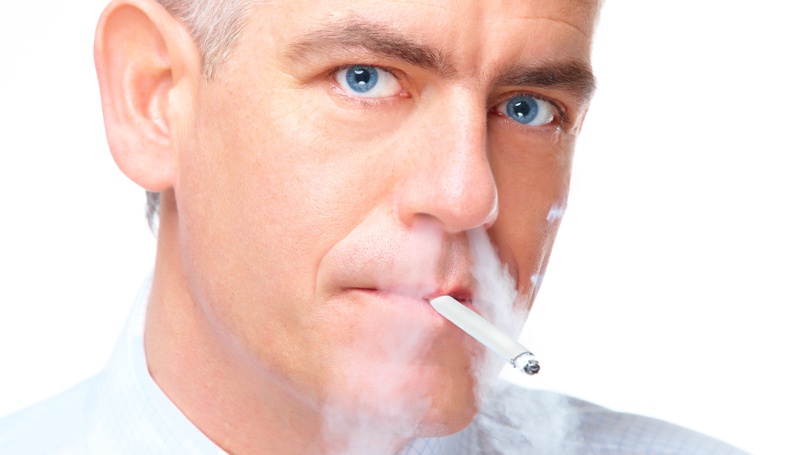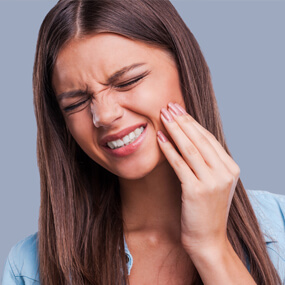Factors That Increase Oral Cancer Risk

Oral cancer affects many Americans. Dentists are striving for greater awareness among patients because they are in a unique position to make the early diagnoses that save lives at a high rate. With that in mind, let us consider what we know about oral screening, what we are learning, and what is unusual.
The term oral cancer tends to mean squamous cell carcinoma (SCC). SCC explains 90 percent of all mouth-related cancers. According to the American Cancer Society, more than 50,000 Americans are diagnosed with SCC in the oral cavity annually. Worldwide, nearly 4 percent of all cancer is oropharyngeal in nature, and these cases explain more than 3.5 percent of all cancer-related deaths.
These statistics alone underscore the need for better awareness among dental patients.
What causes oral cancer? There is no simple answer. Many factors can and often do contribute to it. Prevalent causes can even vary based on your genetics and where you live.
In the past, the poster child for SCC was a senior male with a history of alcohol and tobacco. With greater awareness of the risk factors, we have learned that this portrait was much too narrow.
Let us consider the prevalent risk factors as well as some unknown factors that are likely in play.
Tobacco
Tobacco, as a carcinogen, needs no introduction. There are TV ad campaigns dedicated to informing people that tobacco causes more cancer than any other risk factor. It is a clear risk factor for oral SCC as well. Tobacco smoke is classified as a Group 1 carcinogen. That indicates significant evidence that you are at risk from exposure, which is why there has been so much pushback against secondhand smoke. Cigarette smoke actually contains four distinct agents that are known to cause cancer individually. The prevalence of smoking in the U.S. is 20 percent. From the perspective of a decade or more ago, that number is low. From the perspective of eliminating cancer, that number is still quite high. Smoking a cigar, pipe, or water pipe are all comparable to smoking a cigarette when it comes to oral cancer.
Tobacco use is, of course, not limited to smoking. Chewing tobacco is chewed. Snuff is generally absorbed through the nasal passage, and snuff can either be dry or wet. Smokeless tobacco is a lot less common in the U.S. than cigarettes but still accounts for 2.3 percent. Risk is a bit harder to pin down when it comes to smokeless because there is much more variety in the products available. However, the data is evolving, and the statistics reveal that dry snuff is the leading cause of tumors among smokeless tobacco products. With all types of smokeless tobacco, habitual usage will actually alter the mucous glands in the placement area as well as stain teeth and cause gums to recede. A positive note is that mucous glands will generally return to normal once a person has ceased using such products.
A recent trend in nicotine consumption is vaping. These devices are often referred to as e-cigarettes, and the e stands for electronic. Statistics show that vape users often cite quitting smoking cigarettes as the reason for use. Prevalence of vape use is now up to 3.7 percent and still trending. It has not been unusual for the marketing of such products to frame vaping as the safe or at least safer alternative to traditional cigarettes. Experts heed caution where reduced harm is a motivation. There are many complexities to nicotine addiction, and still, much we do not know about vaping. It is also important to note that e-cigarettes and the like do not eliminate concerns related to secondhand exposure.
Alcohol
It may surprise people to learn that alcohol is categorized as a Group 1 carcinogen as well and that it is linked with 3.5 percent of all cancers worldwide. However, there are some aspects that muddy the conversation. Alcohol and tobacco are often used in combination. There is also a synergistic component. Alcohol makes it easier for carcinogens from tobacco to permeate mucous membranes, and that increases the cancer risk associated with tobacco by 35 times. The International Agency for Research on Cancer recognizes that independent evaluation of alcohol is difficult and remains incomplete.
Consideration of alcohol as an SCC risk factor has not been limited to consumed alcohol. Researchers have, for instance, studied mouthwash that contains alcohol. Such products are rinsed with and then generally spit out, but the alcohol content often exceeds beer, spirits, and wine. Although results are inconclusive, there is some risk associated with long-term habitual use. Mouthwashes with alcohol are discouraged for people with alcohol addiction, and even if it is not consumed, such rinses can cause problems due to nutritional deficits and liver problems with which the addict is already dealing.
Ultraviolet (UV) Radiation
UV radiation is a risk factor for skin- and lip-related SCC. The stereotypical portrait of a patient with lip SCC is a light-skinned senior male who was employed most of his life outdoors. Repeated exposure breaks down the vermillion border, which is the area between the lips and the skin. Once that margin disappears, the lips can atrophy and experience ulcers. Certain people have genetic disorders that make them particularly prone to this, as well as the inability to undo DNA alterations that UV radiation can cause. Sunscreen, protective clothing, and avoiding excess exposure are all important measures to take.
A number of head and neck malignancies, including SCC, can be treated with radiation therapy. Such treatment actually creates the risk of carcinoma or sarcoma down the road. Doses of radiation and latency after treatment are both factors that play a role in whether a person is affected in this way.
Human Papillomavirus
Infectious agents cause 16 percent of all cancers throughout the world. HPV, in particular, has been linked to oropharyngeal cancer as well as many other cancer types. In the United States, HPV is the most common infection transmitted sexually. Most people with HPV can be rid of it in 24 months. While there has been a focus on oral sex, there is much we still do not know about this infection.
Recent research has identified aspects of HPV related to oral SCC. Nevertheless, clinicians are still in the process of determining how this information can be integrated into an oral screening. There is a great deal of pressure for practical results because oral cancer is now the most common cancer caused by HPV. A part of the problem is how various cancers are classified. The WHO distinguishes oral cavity cancer from oropharyngeal SCC, and while HPV generally does not play a role in the oral cavity variety, it plays a role in more than 70 percent of oropharyngeal-related cases. Another consideration is that there is no one HPV. There are various subtypes, some of which are high-risk while others are low-risk. Oropharyngeal SCC is associated with a high-risk HPV but one for which HPV vaccines account.
The patient with oropharyngeal SCC caused by HPV tends to be a young male with a high degree of sexual activity. Common symptoms include a sore throat, difficulty swallowing, and pain when swallowing. Prior to the tumor being visible, it is not uncommon for this SCC to be diagnosed due to a lymph node that is hard and pronounced. This is another instance that underscores the importance of having regular oral screening performed by a dentist or other oral health professional.
Unknown Factors
There are risk factors that are known to some degree but have not been completely revealed. A profile of one such factor is a young person with a tumor on the front two-thirds of the tongue where there is no evidence of tobacco or alcohol consumption. Such a tumor tends to be aggressive, as in infiltrating nerve fiber bundles. Genetic alterations are being considered, but there has not been enough research in this area. Oral screenings for suspicious lesions need to be performed even with a lack of risk factors.
Oral Disorders With Malignant Potential
A potentially malignant disorder or PMD is defined by WHO as a malignancy risk existing within a lesion or other condition. Many of the risk factors discussed thus far are associated with PMDs, such as a lesion on a mucous gland that results in oral SCC. PMD prevalence worldwide is 4.47 percent. The most common PMDs worldwide can be misleading since prevalence can vary greatly based on population.
Not all PMDs are the same in terms of risk. In other words, certain PMDs have a much greater likelihood to manifest as malignant. Leukoplakia is among the most common PMDs globally. It has a lower rate of transformation than erythroplakia, which is not as common but can be tied to leukoplakia. Even with the same group, manifestation rates can differ. Leukoplakia generally does not manifest at a high rate, but there is a special version of it that has one of the highest potentials among any known PMD. There are also non-PMDs that can be suspicious, such as a mouth ulcer that does not heal within two weeks. The American Dental Association has advised dentists who identify a potentially malignant lesion to refer that patient for a biopsy immediately.
Get Screened for Oral Cancer
More than 50,000 Americans will be diagnosed with oral cancer this year. A positive note is that 90 percent of all oral cancer cases are curable with early discovery. The downside is that early stages are often not symptomatic. Your dentist is pivotal in this regard. Jeffrey D. Clark, DDS, and the entire team at Scottsdale Cosmetic Dentistry Excellence are committed to detecting oral cancer and saving lives. Patient interviews and education can mitigate risk factors. Dr. Clark performs oral cancer screenings for every patient he sees. The technology employed has proven successful for identifying symptoms. Dr. Clark stays current with all risk factors through ongoing education and engages in interprofessional collaboration. In addition, all of the hygienists on staff are trained in the identification of unusual lesions. Annual oral cancer screening is painless and fast. It could save your life. Call us today at 480 585 1853.




